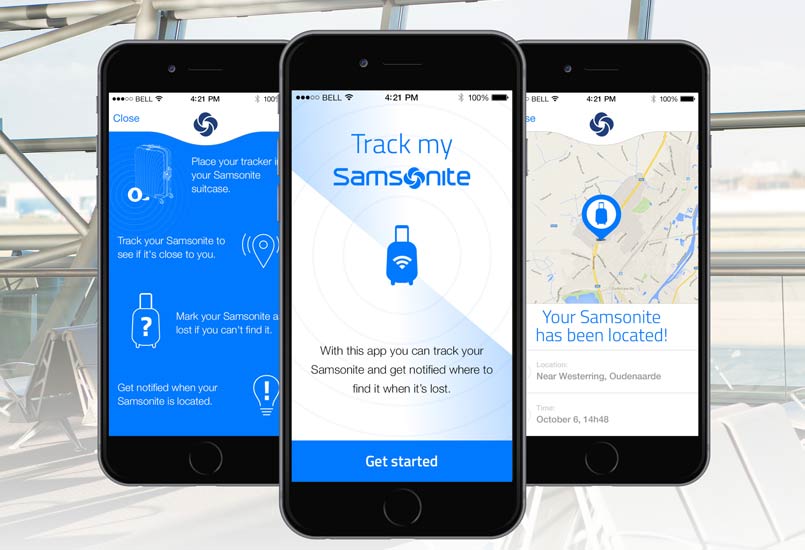Losing your bag when travelling can be a nightmare experience, and Samsonite has come up with a simple solution for this. The company will be introducing a Bluetooth-based following reference point into its bags, which can be followed utilizing a smartphone application. Called Track&Go, this reference point depends on Google’s Eddystone Ephemeral Identifiers (EIDs), an open source, cross-stage Bluetooth LE signal arrangement.
The idea is very straightforward, and a traveller can track one’s bag utilizing Samsonite’s Travlr application. The area of the bag can be followed at a separation of up to 75 meters, and it additionally advises if the bag were to move far from the traveller.
If the suitcase were to go missing though, the traveller can immediately flag it lost. The app can also communicate with other Travlr apps, and if another Samsonite user were to pass within 70 meters of the lost suitcase, and EID signal is picked up and the owner will immediately get a notification on his phone. Samsonite says this feature will work better when there is a large number of travellers using this app, and it also expects airports and baggage handling companies to adopt the technology.
Samsonite’s Track&Go beacons work on Google’s Eddystone, which rivals Apple’s iBeacon, but works on Android as well as iOS. One of the frameworks under Eddystone is the Ephemeral Identifiers (EIDs) mode. An EID is essentially a secure platform that can transact with the owner of the tracker, but it transmits data privately to the owner without leaving any identifiable trace. EIDs will also only work with a tracker after permissions are set.
Samsonite’s Track&Go beacons will first be rolled out on select suitcases in the European markets later this year, followed by other markets next year. Samsonite’s tracking beacons will be a boon for travellers. A recent report stated that in 2014 more than 24 million pieces of baggage were mishandled, and 85 percent were returned to their owners within 48 hours. But 5.5 percent pieces of baggage were never reunited with their owners.





